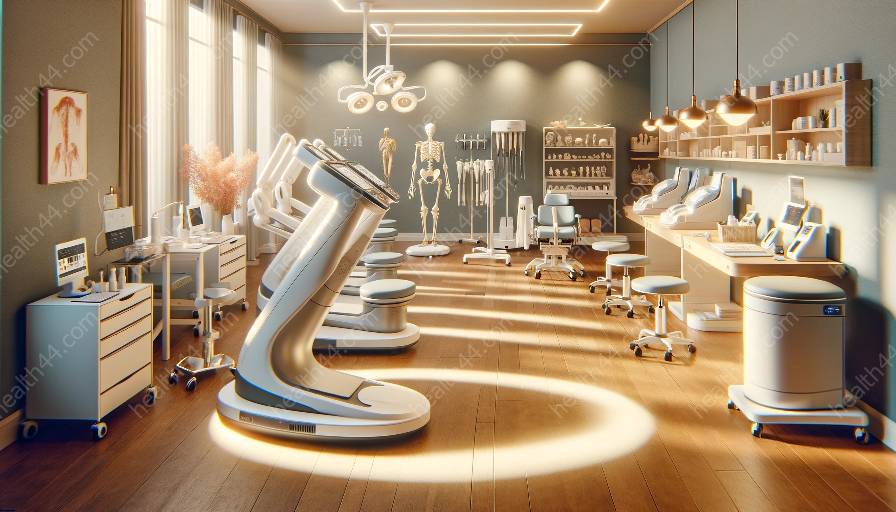Orthopedics is a branch of medicine that focuses on the musculoskeletal system, including bones, joints, ligaments, tendons, and muscles. The field of biomechanics, which is the study of mechanical aspects of living organisms, plays a crucial role in advancing orthopedic treatment and enhancing the design of orthopedic equipment and medical devices.
Understanding Biomechanics
Biomechanics is a multidisciplinary field that combines principles from mechanics, biology, and anatomy to understand how the human body moves and how forces affect it. In orthopedics, biomechanics helps clinicians and researchers comprehend the nature of musculoskeletal disorders, injuries, and the mechanical behavior of implants and orthopedic devices.
Biomechanics and Orthopedic Equipment
Biomechanical principles are integrated into the development and use of orthopedic equipment to enhance therapeutic outcomes. From artificial joints and braces to surgical instruments and rehabilitation tools, biomechanics influences the design, functionality, and safety of orthopedic equipment. For example, prosthetic limbs are engineered to mimic the biomechanics of natural limbs, allowing for better performance, comfort, and usability for patients.
Medical Devices & Equipment in Orthopedics
Orthopedic medical devices and equipment are essential for diagnosing, treating, and rehabilitating musculoskeletal conditions. Biomechanics plays a critical role in the innovation and improvement of these devices. For instance, imaging devices such as MRI and X-ray machines utilize biomechanical principles to precisely capture internal musculoskeletal structures, aiding orthopedic specialists in diagnosis and treatment planning.
Biomechanical Innovations in Orthopedics
Advancements in biomechanical research have led to innovative solutions in orthopedic care. For instance, computer-aided design (CAD) and 3D printing technologies are revolutionizing the development of personalized orthopedic implants and devices, enhancing patient-specific treatment and rehabilitation. Additionally, robotic-assisted orthopedic surgeries integrate biomechanical precision and accuracy, offering improved surgical outcomes and faster recovery for patients.
Future Perspectives and Challenges
The future of biomechanics in orthopedics holds promise for further advancements in patient care and orthopedic equipment. Challenges such as the integration of biocompatible materials, biomechanical modeling for predictive analysis, and the development of smart orthopedic devices are areas where biomechanics will continue to make significant contributions to orthopedic treatment and management.
Conclusion
Biomechanics is a vital element in the field of orthopedics, influencing the development, functionality, and efficacy of orthopedic equipment and medical devices. By understanding the biomechanical principles underlying musculoskeletal health, orthopedic professionals can enhance patient care, improve treatment outcomes, and ensure the advancement of orthopedic equipment for the benefit of patients worldwide.


